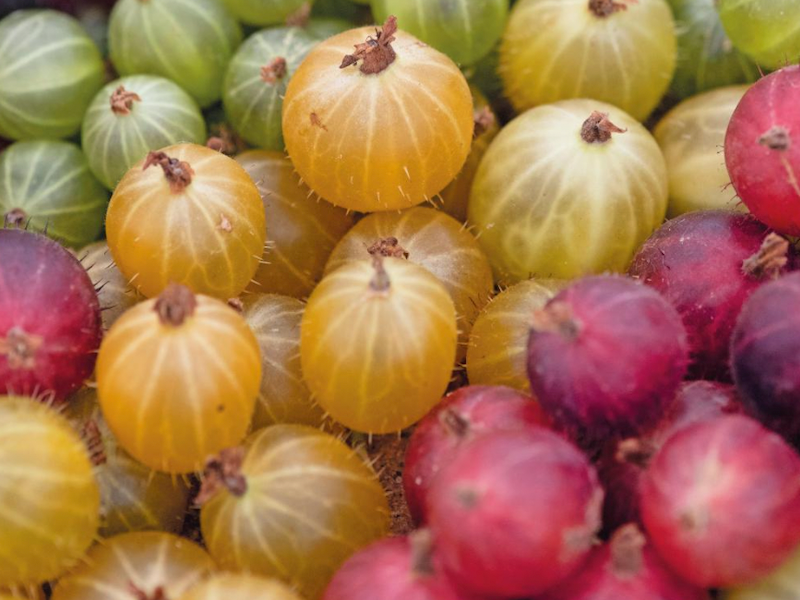Gooseberry plants are versatile fruit bushes, requiring little maintenance and yielding high levels of plump juicy fruits. You don’t need a huge garden – they’re just as happy in containers as the ground – and while they prefer sun, they can certainly cope with shade. Whether you have gooseberry fools on the horizon, or a penchant for homemade jam, here’s everything you need to know about growing your own gooseberries.
The best gooseberry varieties
Gooseberries (Ribes uva-crispa) are in the same family as redcurrants and blackcurrants. They’re hardy berries, suitable for growing in colder areas of the UK. Here are some of our favourite varieties:
- ‘Hinnonmaki Yellow’ – Great flavour with a hint of apricot. Good hardiness and disease resistance. Harvest the golden berries in June and July.
- ‘Giggles Collection’ – This collection contains the three new ‘Giggles’ varieties in green, red and gold. The fruits are particularly smooth-skinned. Harvest in April, slightly earlier than other varieties.
- ‘Invicta’ – This is an RHS Award of Garden Merit-winning variety, especially suited to cooking jams or pies. The green fruits ripen in June and July.
- ‘Captivator’ – These smooth purple fruits are sweet and good for eating straight from the bush, ripening in July. This variety shows excellent mildew resistance.
- ‘Hinnonmaki Red’ – Produces reliable heavy crops of smooth-skinned red berries in July. It’s a traditional variety with great disease resistance.
If you can’t decide, why not try a mixed gooseberry collection including three classic varieties to plant up for a fun mix of colours and flavours.
How to plant gooseberries
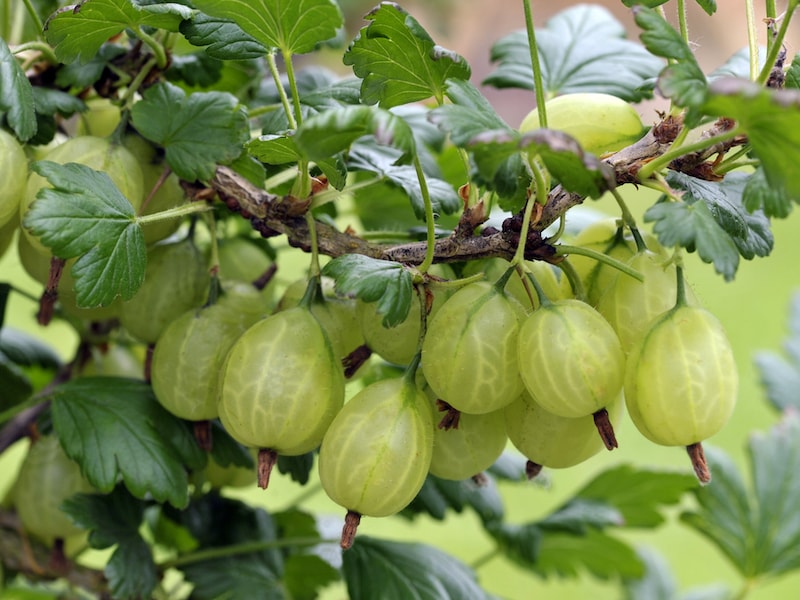
Image: Gooseberry ‘Giggles Green’ from Suttons
Gooseberries like to be planted in well-drained, fertile soil, and prefer a sunny position that’s sheltered from cold winds. Work the soil to a depth of 25cm, incorporating plenty of organic material like well-rotted manure or compost.
If you’re starting your gooseberries between November and March, go for bare root plants. Simply soak the roots for a few hours before planting them in a hole up to the juncture between stem and roots. If it’s already spring or summer, start with a container-grown gooseberry plant. Dig a deep hole to hold the root ball, submerging the gooseberry up to the same depth as bare root.
After planting, prune the branches back by a third, preferably to an outward or upward facing bud. Firm the soil over the roots with a boot, and mulch the surface well to keep the moisture in.
How to prune gooseberries
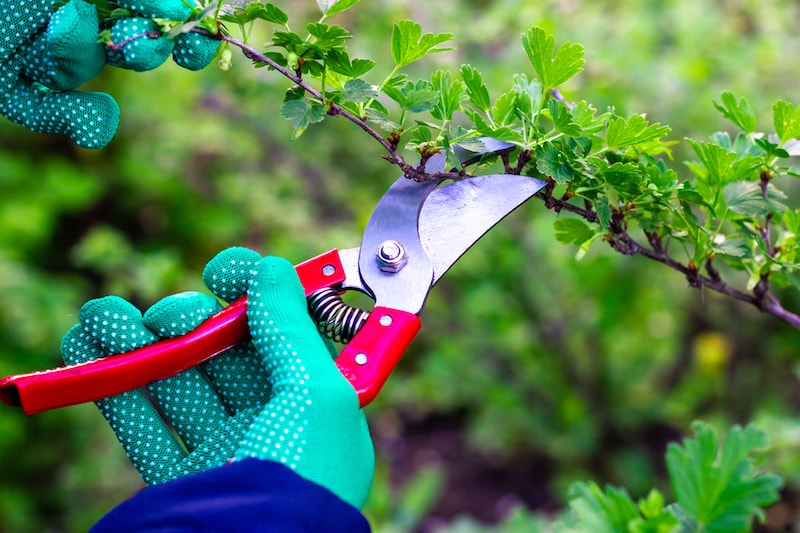
Image: SashaMagic/Shutterstock
Use clean and sharp secateurs when you come to prune your gooseberry bushes. Make each cut roughly 1cm above an outward facing bud to encourage the new growth to develop away from the centre. Prune your gooseberries twice a year:
- Summer pruning. Trim the fruiting branches back to five leaves in late June to reduce the likelihood of storm damage and direct the plant’s energy to fruit production. Creating space in the centre of the bush allows more light and greater air circulation.
- Winter pruning. Between November and March, while your gooseberry is dormant, prune the leading top growth back by roughly half. Take side growth back by roughly 5cm. Remove any dead, diseased or dying growth as you prune.
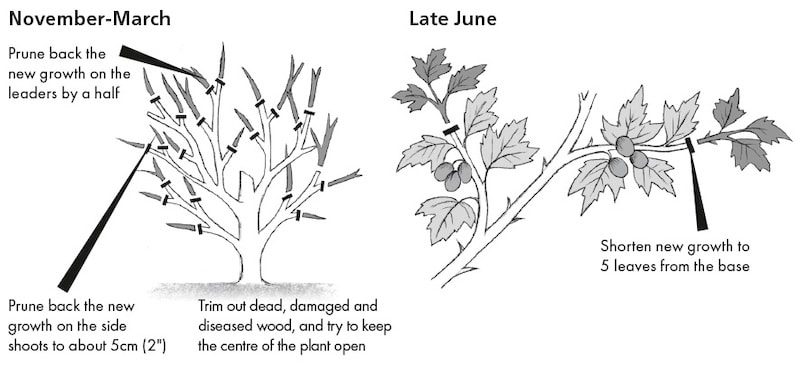
How and when to harvest gooseberries
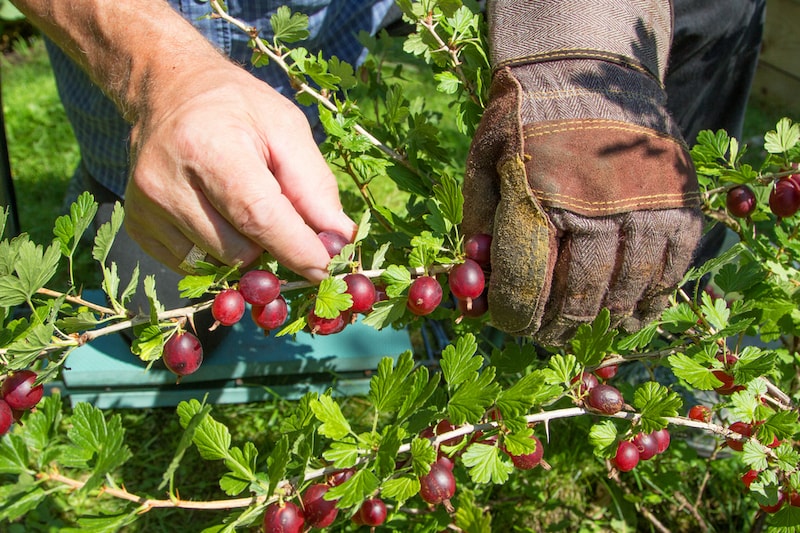
Image: Jeanie333/Shutterstock
Gooseberries ripen during the summer months, although different varieties will be ready at slightly different times. The colour of your ripe gooseberries will also vary, depending on the variety you’re growing.
For cooking, pick your gooseberries when they’re still slightly hard in June, and the flavour is a little tart. The longer the berries stay on the bush, the sweeter they become.
If you’re eating them raw, wait until they’re fully ripe.You’ll know when they’re ready as they’ll feel slightly squidgy when gently handled, and should break away from the plant with a slight tug.
Don’t worry if you get a glut; gooseberries freeze really well. Pop them on a tray in the freezer for a few hours or overnight, and then tip them into a freezer bag until you’re ready to use them.
Quick guide to growing gooseberries
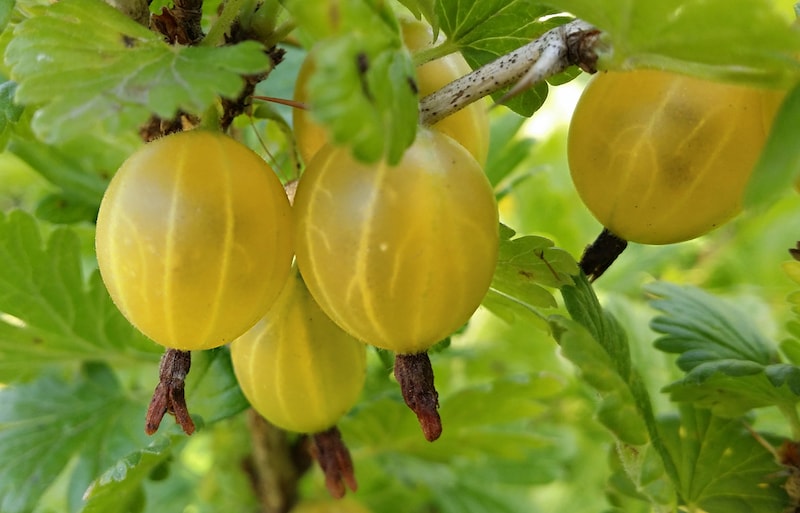
Image: Gooseberry ‘Hinnonmaki Yellow’ from Suttons
Here’s our quick guide to growing bumper crops of gooseberries:
- Water. Give your gooseberry plants plenty of water in dry spells in spring and summer, especially during fruiting.
- Mulch. Add mulch to the soil above the roots of your planted gooseberry to help it retain moisture during hot periods.
- Prune. Prune your gooseberries from the first year after planting to remove unhealthy growth and help them focus on fruit production.
- Self-fertile. You don’t need to group gooseberry bushes together or have more than one plant for it to produce a big crop. One bush will happily fertilise itself.
We hope you’ll enjoy growing your own plump gooseberries. Share photos of your crop with us via social media using #mysuttonsjourney.
Lead image: Gooseberry Plant Collection from Suttons

